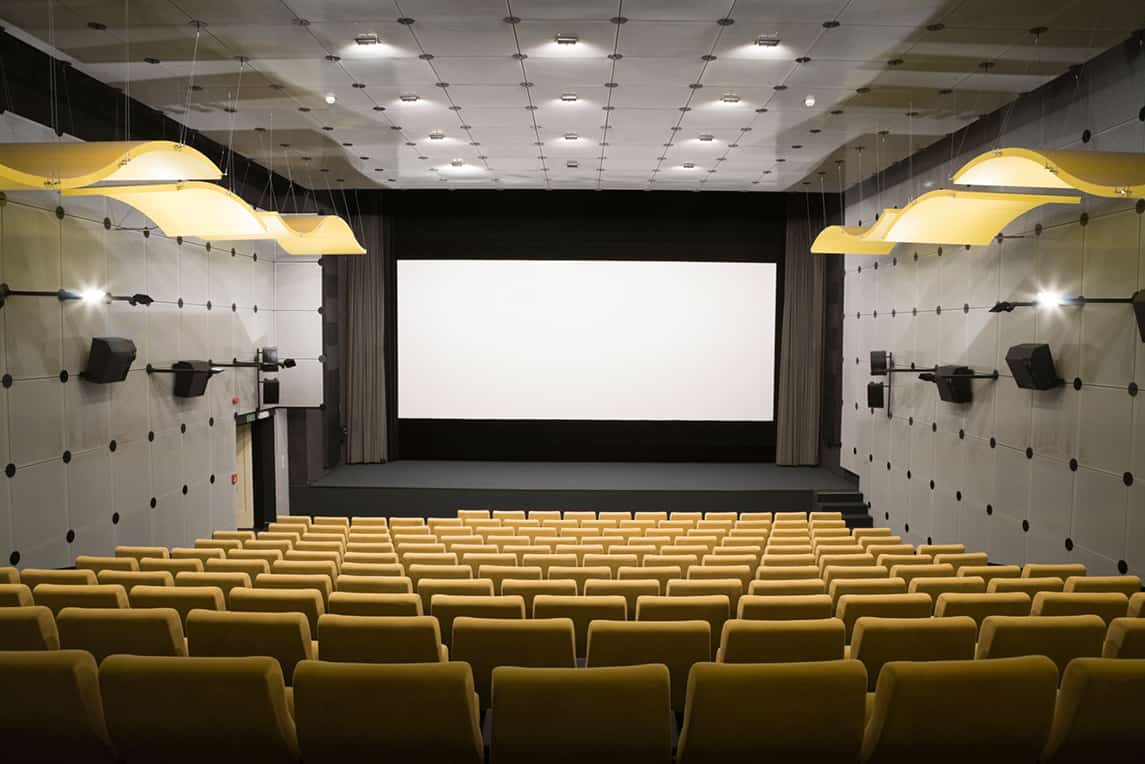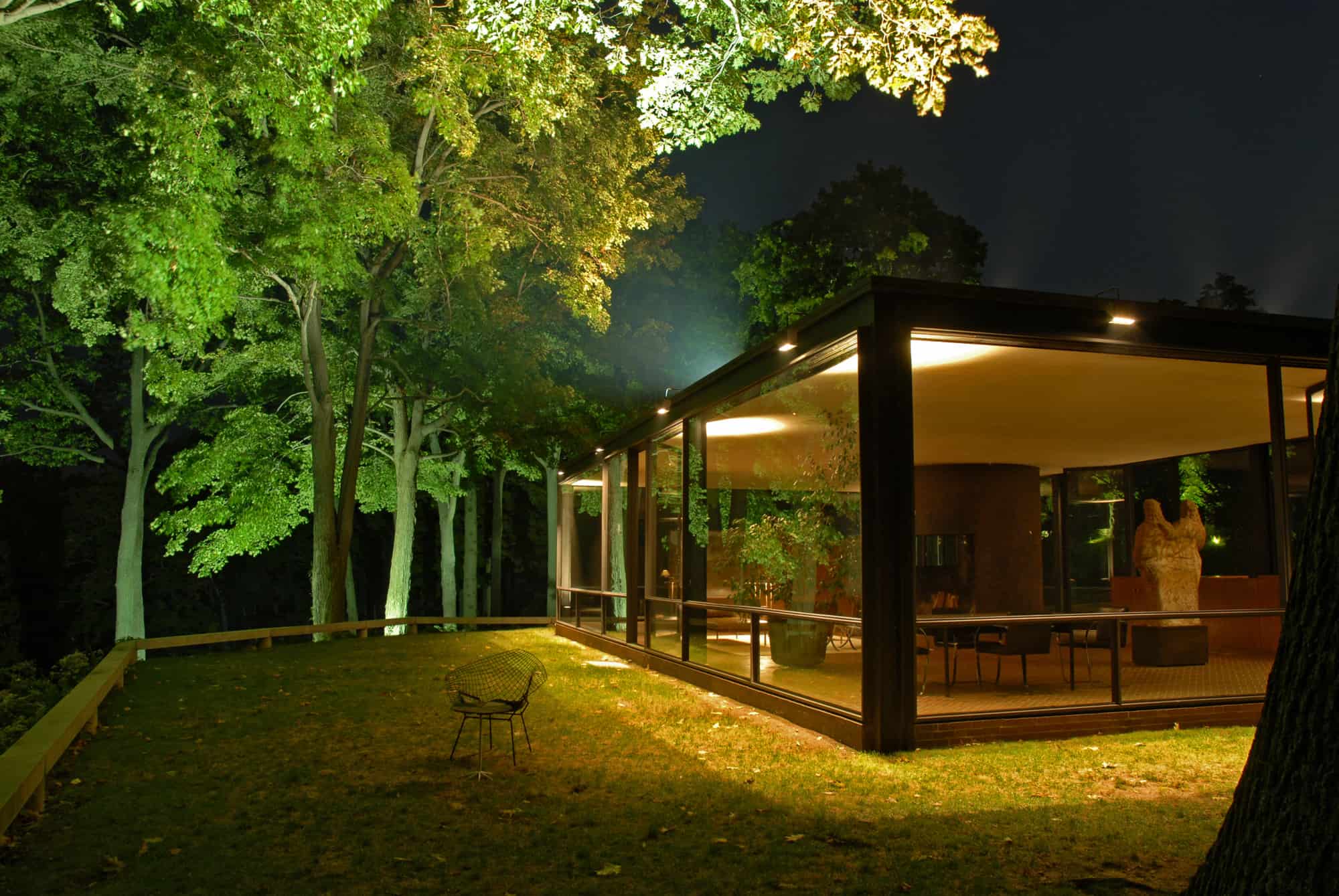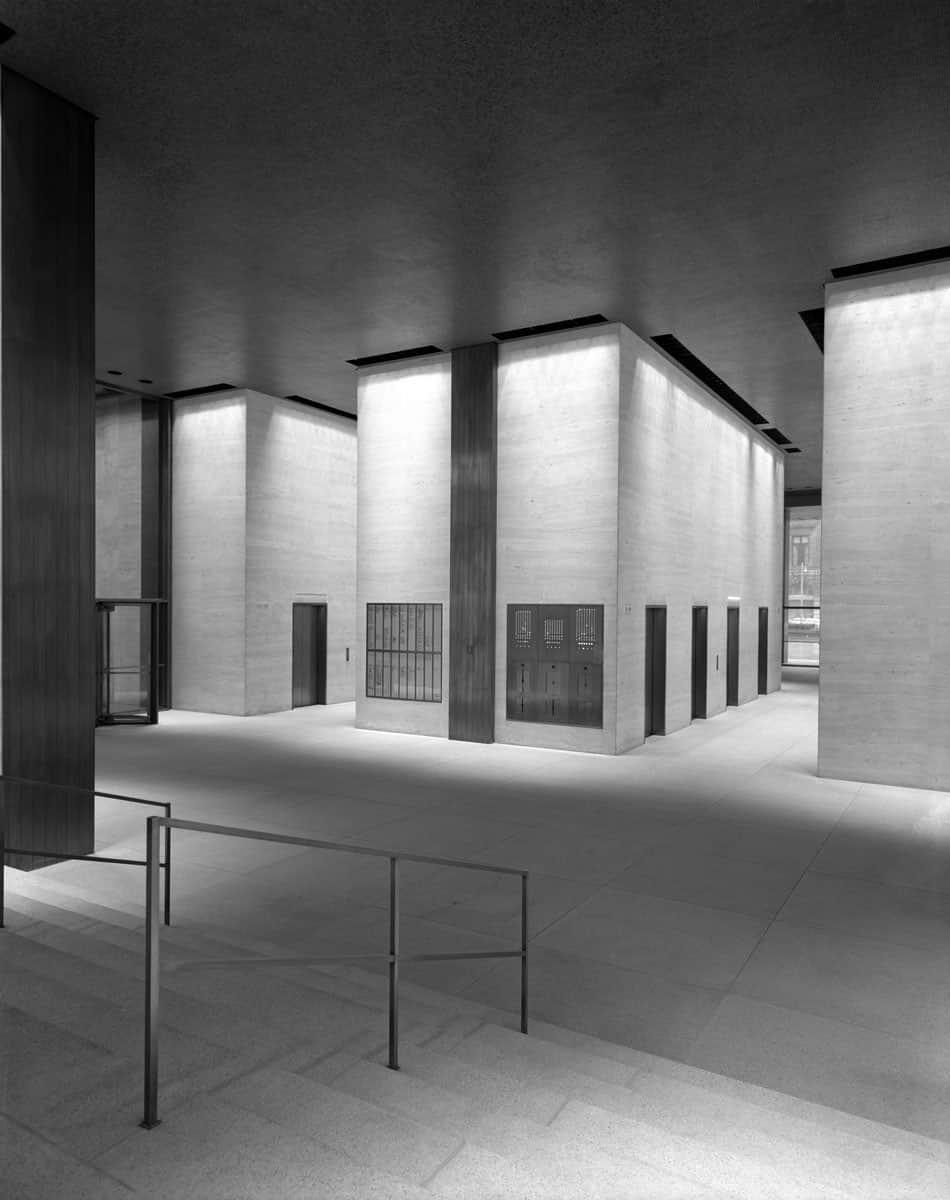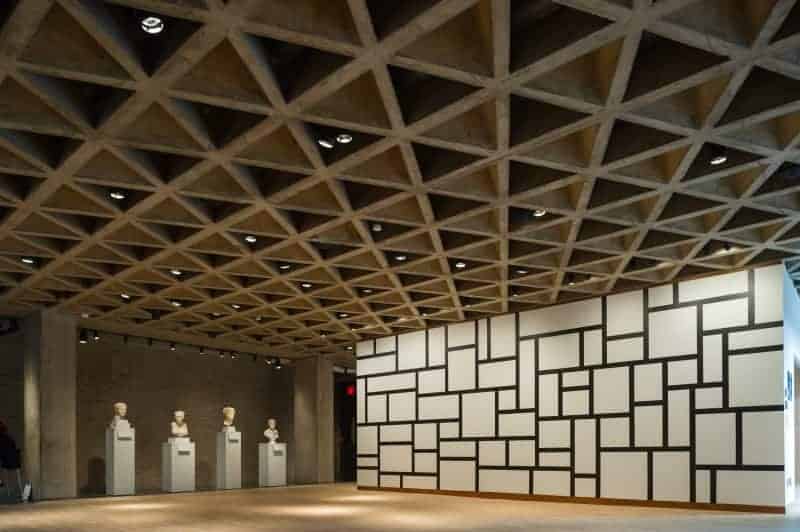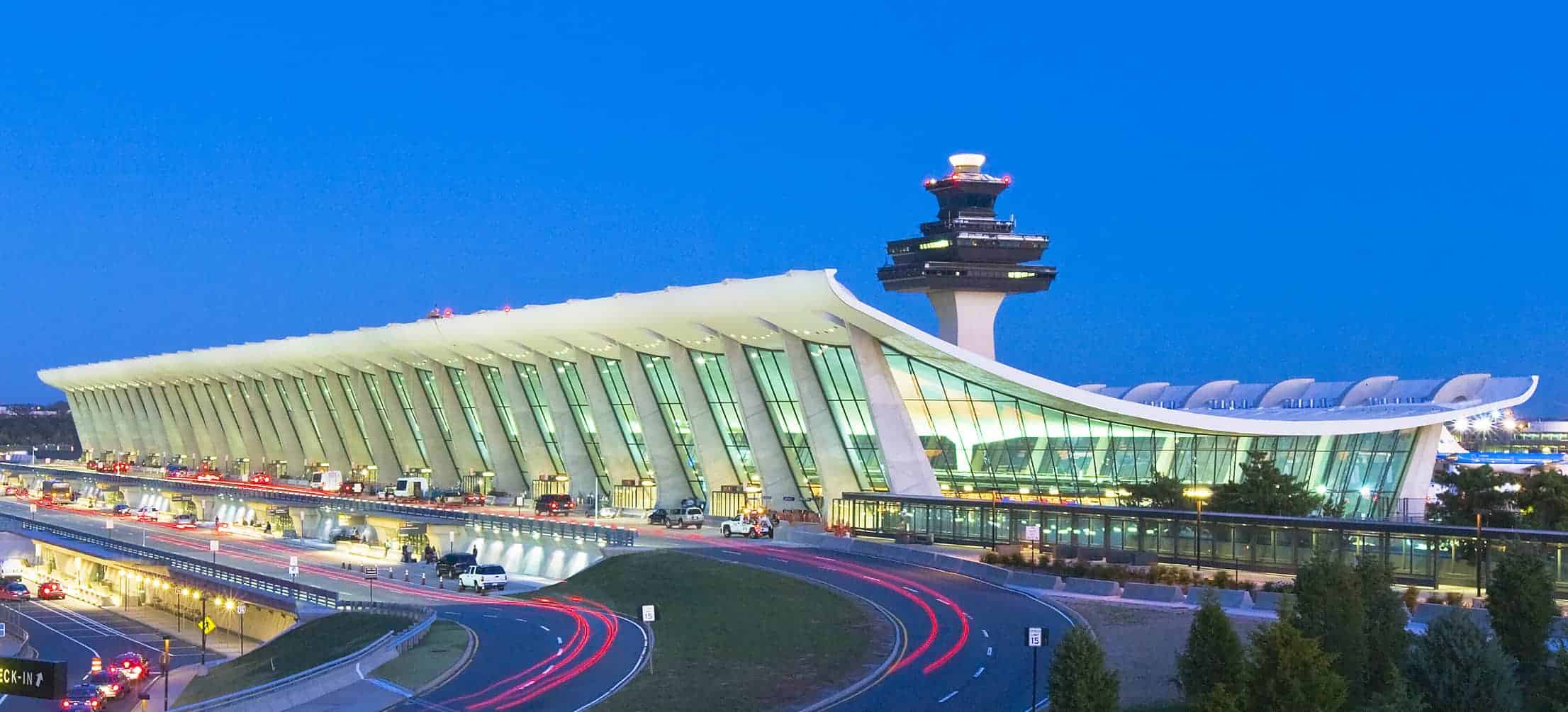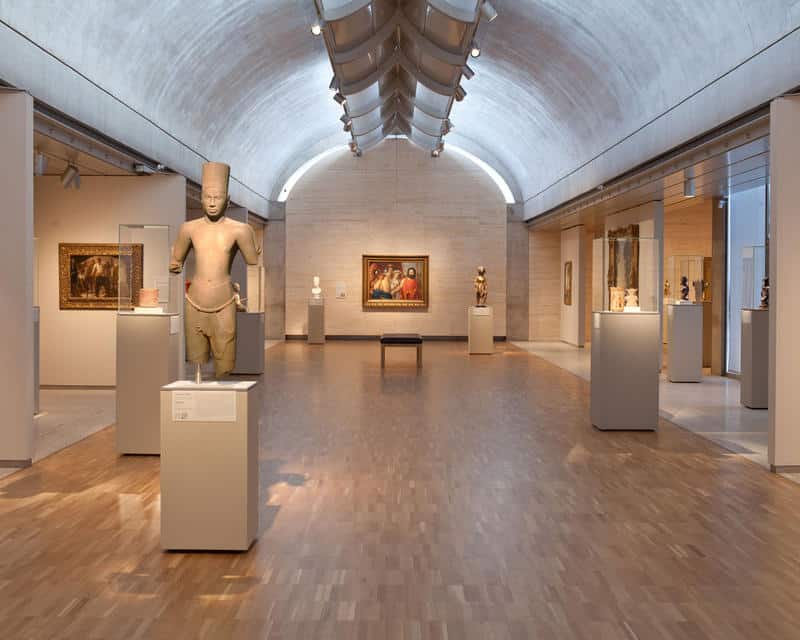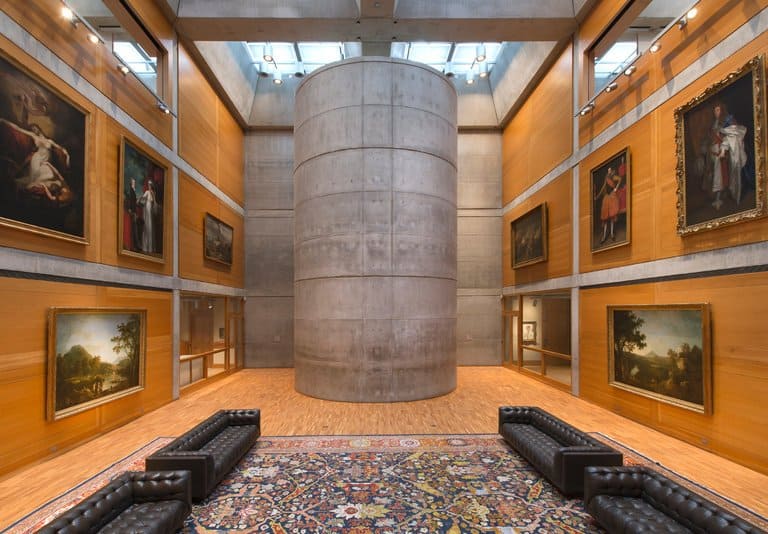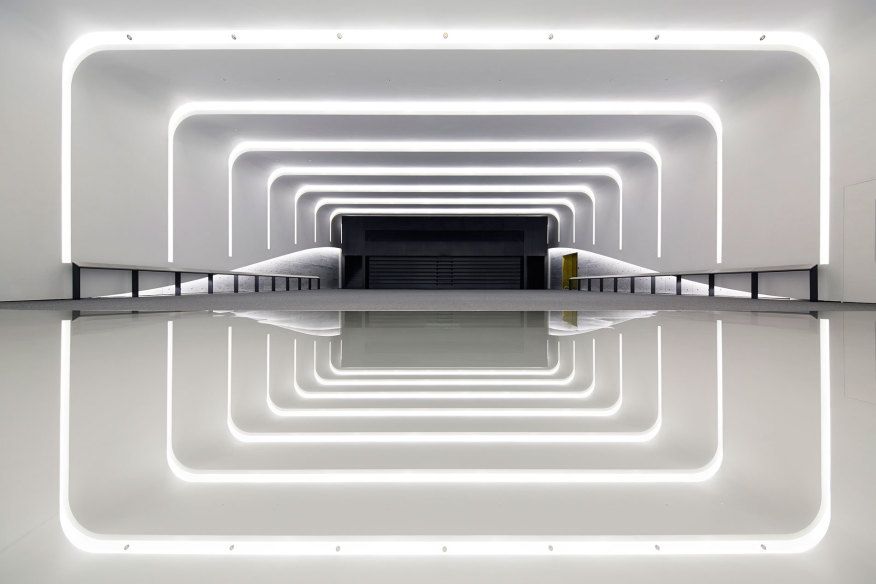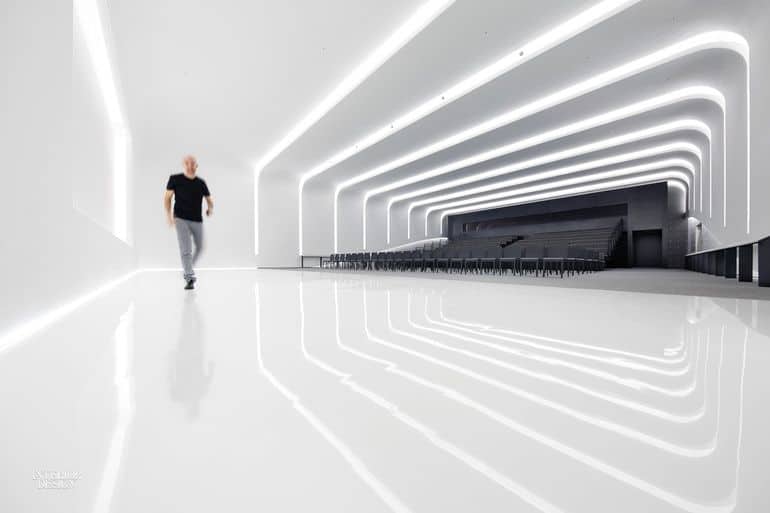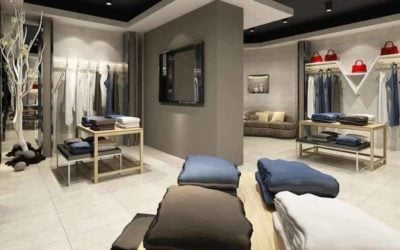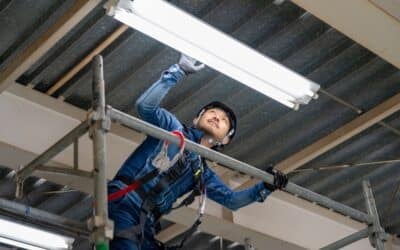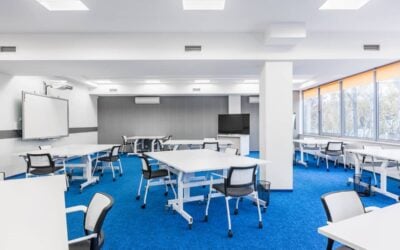The Importance of Architectural Lighting
The way lighting can help bring value to the function of architecture.
Lighting plays a vital role in the way people experience and understand architecture. Whether buildings and structures are lit naturally or artificially, lighting is the medium that allows us to see and appreciate the beauty in the buildings around us.
Lighting can bring an emotional value to architecture – it helps create an experience for those who occupy the space. Without lighting, where would architecture be? Would it still have the same impact? No, it wouldn’t. Whether it’s daylighting or artificial lighting, light draws attention to textures, colors, and forms of a space, helping architecture achieve its true purpose. Vision is the single most important sense through which we enjoy architecture, and lighting enhances the way we perceive architecture even more.
To create a successful balance between lighting and architecture, it’s important to remember three key aspects of architectural lighting: (1) aesthetic, (2) function, and (3) efficiency. Aesthetic is where designers and architects focus on the emotional impact the balance of lighting and architecture will have on occupants. It’s where designers determine how they want people to feel when they walk around a space. This aspect is especially important for retail locations; exterior lighting should draw the consumer in, and the interior lighting should awe them as they walk through the doors in addition to showing off product.
The second aspect, function, cannot be overlooked. We want the lighting to look a certain way, but we have to also make sure it serves its most important purpose – to help us see. Areas should be illuminated so occupants feel safe when navigating a room or entire building. They should be able to see the floor and walls around them, which should create a feeling of reassurance.
The final aspect is very important in today’s age of green building and sustainability movements. It’s one thing to create a breathtaking lighting layout, but it’s another to create a breathtaking layout that is also incredibly energy efficient. This can be done by assuring the majority of the light is reaching its target and there is less wasted light. Reducing the amount of wasted light will make the building more efficient. An easy way this can be done is to install LEDs instead of fluorescent lighting. Because of the technology, there is less wasted light with LEDs than fluorescent due to the directional nature of LEDs.
Buildings and urban spaces should be designed first and foremost around their occupants. The importance of architecture as a trigger to physical, physiological and psychological wellbeing is nowadays becoming a topic of significant relevance.
Richard Kelly (1910-1977): A Pioneer of Modern Day Lighting
Architectural lighting design has come a long way, and Richard Kelly was one of the lighting pioneers who began using lighting as an architectural element instead of simply using it to light a space. He trained at the Yale University School of Architecture in the early 1940s, to later tally an impressive 300+ projects in his 40-year career. His theories and teachings have changed the face of lighting design as a profession, and he will remain as one of the most influential people in the industry.
Some of his most well-known projects include: The Glass House (1949), Seagram Building (1958), Yale University Art Gallery (1953), Dulles International Airport (1963), Kimbell Art Museum (1969) and the Yale Center for British Art (1974).
Lighting is such a large part of the visual arts – architecture, most of all – that I’m sure the best we can do today will be inadequate tomorrow. I can logically project a great many techniques in lighting to improve people’s lives, or to make a house more beautiful, but it’s all theory until we have the record of experience, which we are only beginning to write.
In his lecture titled “Lighting as an Integral Part of Architecture,” (1952) Kelly goes into his three “elemental kinds of light” that still act as the heart of lighting design today.
1. Focal glow – Today, this kind of light is referred to as task lighting. It points out important elements and draws attention to areas, all while making it easier to see.
“…directive, creates a brighter center; tells us what to look at, organizes, marks the important element.” – Richard Kelly on focal glow.
2. Ambient luminescence – This is also known as general or ambient lighting. It’s the background lighting that illuminates and entire space. It should be even and uniform, casting no shadows and makes people in the space feel safe.
“It [ambient luminescence] minimizes form and bulk. It minimizes the importance of all things and people. It can suggest the freedom of space and can suggest infinity.” – Richard Kelly on ambient luminescence.
3. Play of brilliants – Also known as accent lighting, this layer can by dynamic and colorful and it aims to stimulate people and emotions.
“…excites the optic nerves, and in turn stimulates the body and spirit, quickens the appetite, awakens curiosity, sharpens the wit.” – Richard Kelly on play of brilliants.
After discussing his theoretical statement for lighting, he goes into the “specific qualities attributed to it [light] by the regular occurrence of specific effects,” The first quality is intensity, or the “total quantity of light flux moving towards a surface.” The light arriving at the surface is usually measured in footcandles or lux. The second is brightness, which is the amount of “light per unit area reflected from or emitted through a surface or area.”
The third quality is diffusion. Diffusion is the reflection of light from a surface such that an incident ray is reflected at many angles rather than just one angle, creating a uniform light spread. Kelly describes this quality as being “best illustrated by an open white sandy beach on an over-all cloudy day.” A large source of light shouldn’t produce any shadows, and a small light source will produce sharp shadows.
His fourth quality is spectral color, which is color that is evoked by a single wavelength of light in the visible spectrum, or by a narrow band of wavelengths (monochromatic light). The fifth and sixth are direction and motion. Direction refers to the direction of light relative to eyelevel, as motion refers to the “movement of light, real and implied.” When observing the direction of lighting, studies have shown that the placement of light sources can make people feel different ways. Kelly describes that lighting placed above eyelevel can produce a feeling of restraint to create a “formal atmosphere.” But lighting placed below eyelevel can create a feeling of “individual human importance,” creating an informal atmosphere.
How Light and Architecture Work Together
Before we get into how light and architecture impact one another, it’s important to know the main categories of buildings and what each try to accomplish with lighting. The first group (public buildings) is comprised of sports arenas, libraries, hospitals, etc. These types of buildings are more concerned with providing the right amount of light for tasks and other types of events. Sporting events like football and baseball require the right amount of light so the players on the field can see and so the spectators can see the field. It’s also important for when spectators go to and from their seats and navigate the rest of the arena/stadium. It’s the same concept with libraries and hospitals. In libraries, occupants need to have the proper light levels to read, write and find books on shelves, while hospitals need high light levels for doctors and nurses to successfully do their jobs.
The second group (official buildings) is comprised of mainly warehouses and office buildings. Their number one concern with lighting is the efficiency. With the large energy consumption of those properties, they can’t afford to spend a fortune on lighting and the electricity it consumes. And with green building trends on the rise, it’s important to have energy-efficient and sustainable lighting.
The third and final group (specialized buildings) is comprised of museums, theaters, casinos, etc. These buildings rely heavily on atmosphere and the experiences they can provide. They are concerned with enhancing the appearance of architectural spaces and elements. When people go to a theater to see a play or musical, they are expecting an experience before the show even begins. They want to see a beautiful chandelier welcoming them in the lobby, lavish wall sconces lighting the hallway to their seats, and the area around the stage to be lit to accentuate statues, pillars and other architectural features.
Lighting Spatial Borders
To enhance architectural elements and evoke emotions, it’s important to understand spatial borders and how to properly light them. To enhance vertical borders for example, light should be directed towards wall surfaces. If there is a wall that is a different texture, or simply one that the occupants should notice more than others, wall washing is a great tool (Image A). It will draw attention to the wall and make it appear as its own architectural element instead of a piece of an entire room. This can be used in retail locations to draw more attention to wall displays.
Horizontal borders can be emphasized by illuminating the floor and ceiling. By lighting the floor, objects and pedestrian surfaces are lit. This is particularly important in dark spaces such as movie theaters and night clubs. The ambient and accent light levels are so low that not enough light reaches the floor, thus requiring the floor to be illuminated (Image B). Executed properly, this can act as task and accent lighting. If light needs to be diffused in the room, lighting the ceiling can be a successful strategy. It helps create a uniformity of light throughout the room and provides proper light levels without the use of direct light on objects.
After vertical and horizontal borders have been lit, it’s important to not forget about lighting architectural elements. Lighting pillars, archways, textures, etc. can draw attention away from a room as a whole, and force the eye to focus on the illuminated architectural elements (Image C). In a room full of colors and architectural elements, it’s sometimes difficult to make certain areas stand out. Light can help with this problem by making those elements more obvious. This tactic can be used for interior and exterior lighting applications.
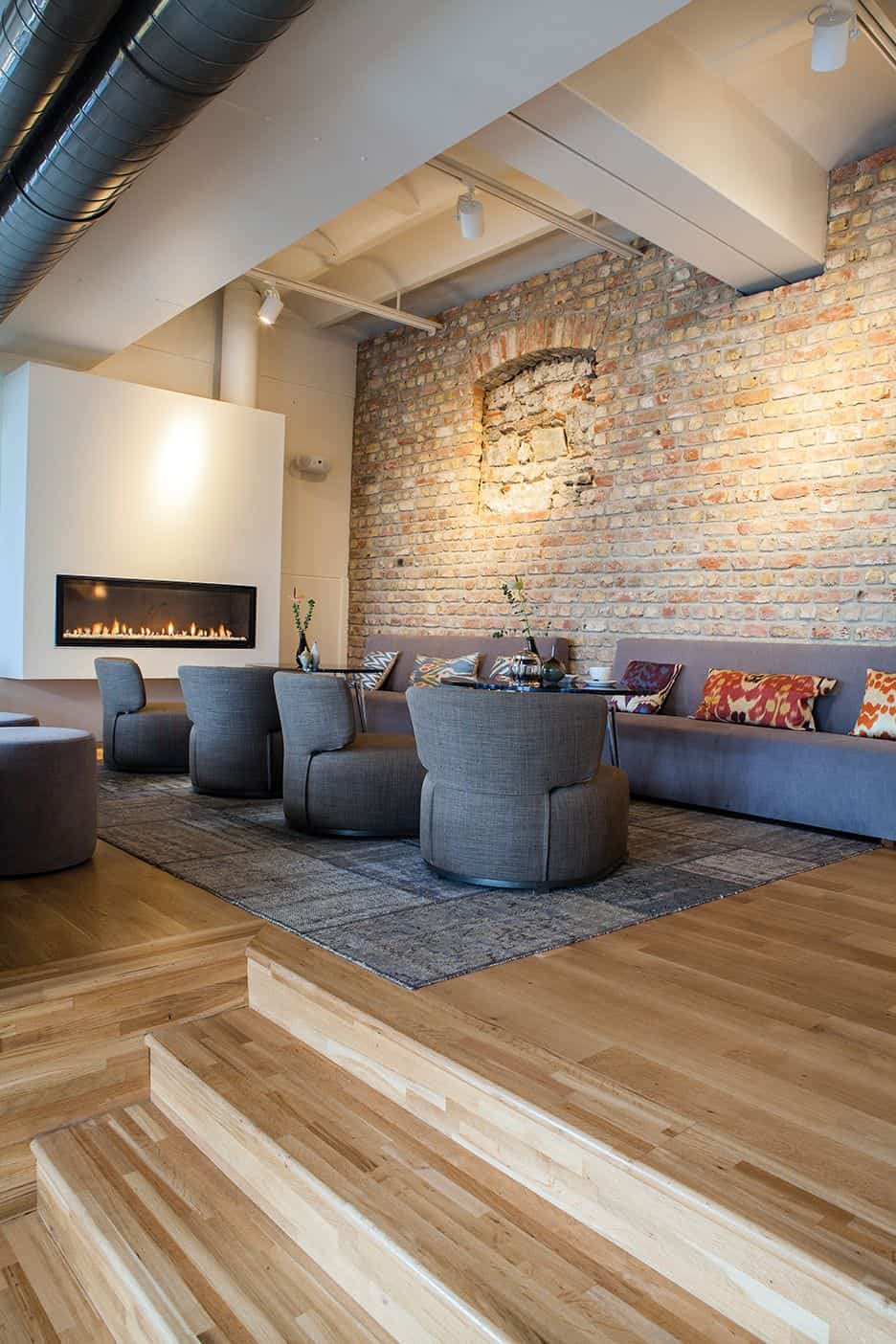
Image A
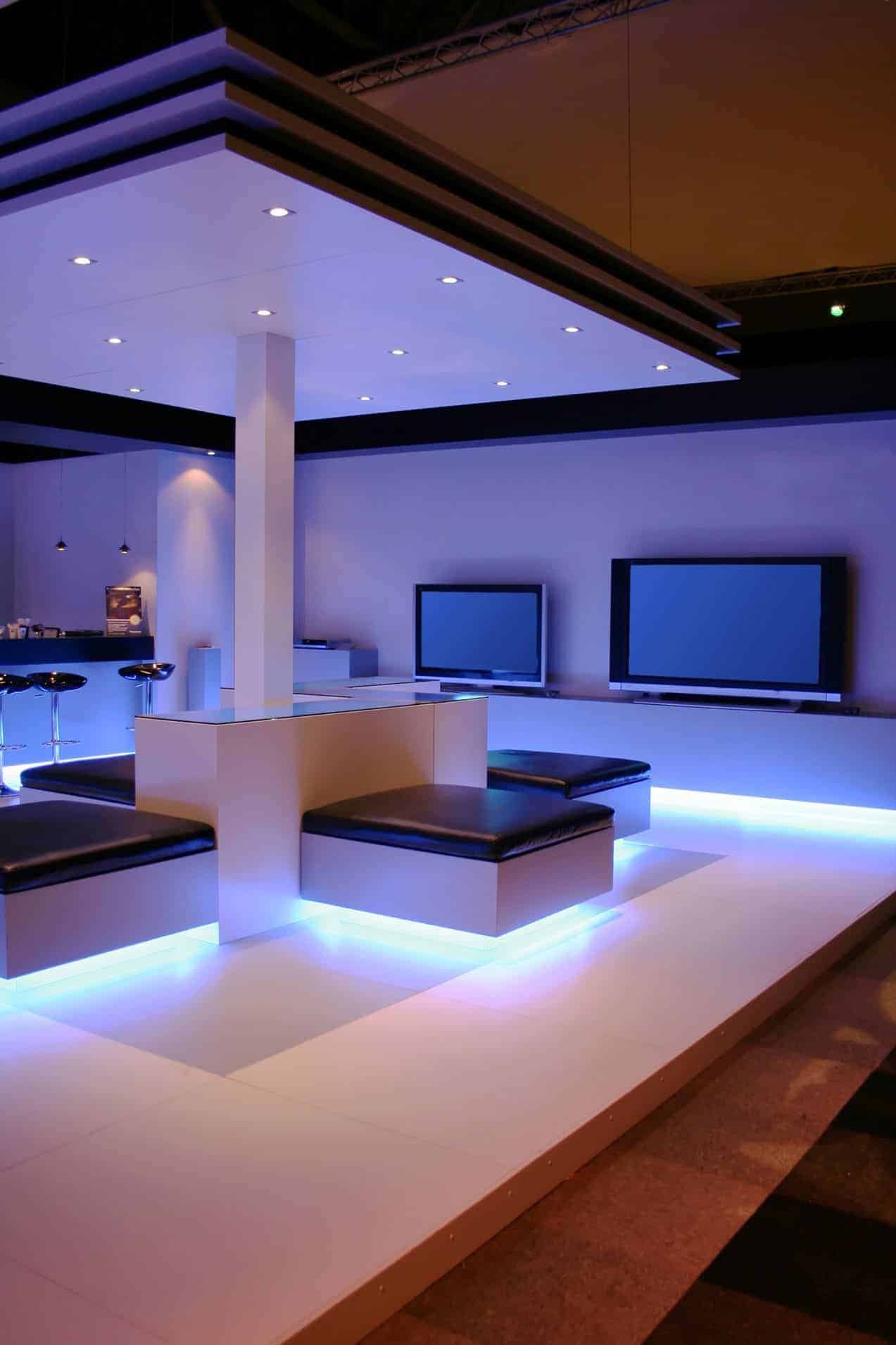
Image B
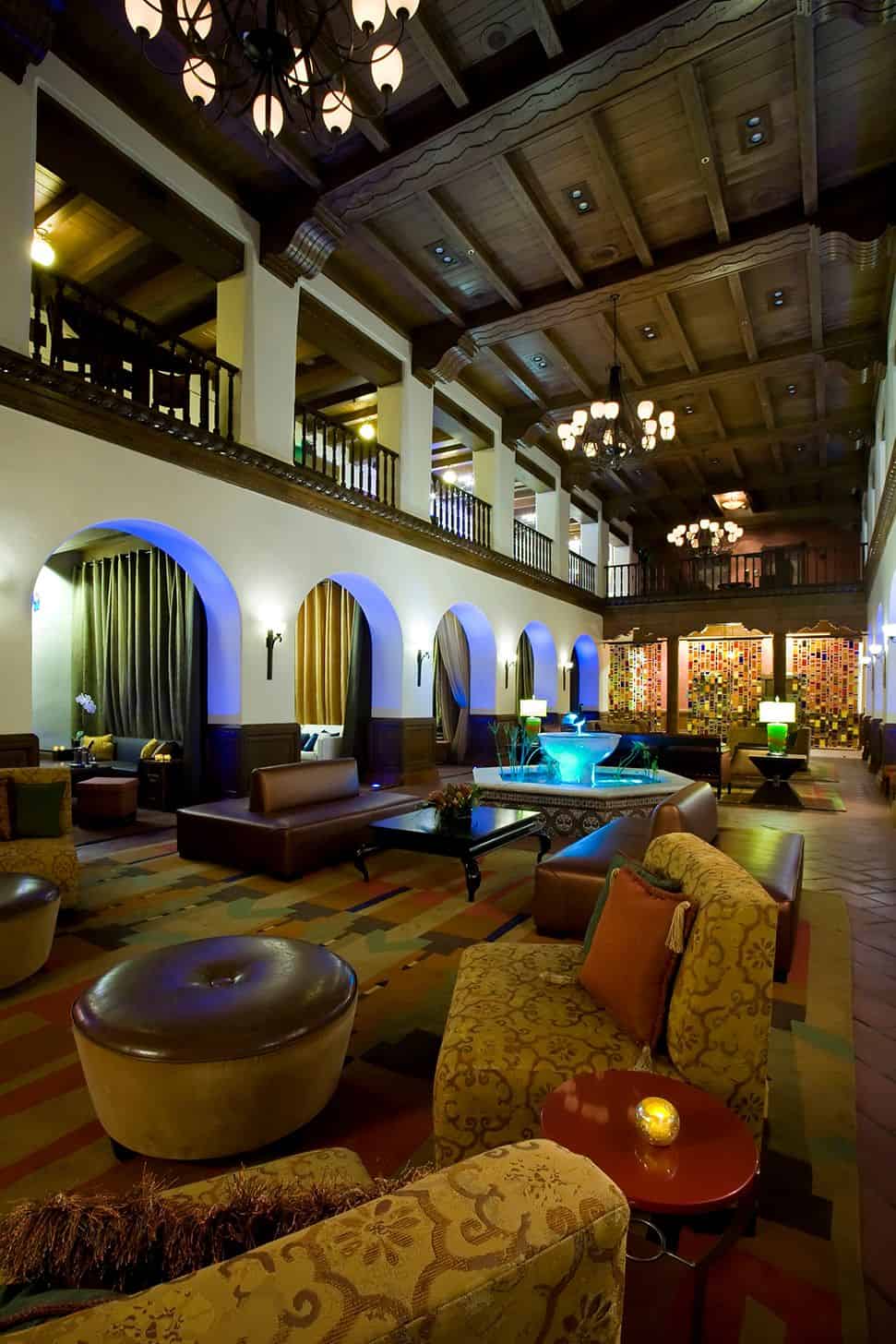
Image C
Common Architectural Elements
Architects use many different types of materials to alter the way light enters a building and the way artificial light interacts with interior architecture. One of the most common structural materials is glass. Whether it’s the use of completely transparent or translucent glass materials, glass can have many different effects on buildings. Natural colors can change throughout the day as the sun reaches different points in the sky, thus altering the colors of light entering a building. The look of a building at noon can look completely different than the same building when the sun is rising or setting.
A great example of the use of glass is the Bahá’í House of Worship of South America located in Santiago, Chile. This building not only utilizes the visual impact of glass and light, but it also won the 2017 Architectural Lighting Magazine’s (AL) Design Award for Outstanding Achievement, Whole Building. The concept behind the building was a “flower of light” and is comprised of nine cast-glass petals. The spaces between the petals are made of transparent glass and act as skylights. The inside of the petals are lined with translucent white marble to let just enough light in during the day. At night, the artificial lights that are placed inside the petals illuminate, transforming the building.
The use of reflective surfaces can also transform a space. When light interacts with reflective floors, ceilings and walls, it can be perceived as an architectural element itself. Lighting on walls that continue to the floor can create dimension in a short hallway or small room and can add a futuristic feel to a room.
As mentioned above, natural light can be a powerful tool that can transform architecture. A great example of the use of daylight is the Baylor University Paul L. Foster Campus for Business and Innovation. The main area of the building is lit with skylights that cover the entire ceiling. The goal for this building was to provide as much natural light as possible, while reducing unwanted light during various times of the day. To achieve this goal, the skylights include different angles to tailor to the different angles of the sun throughout the day. This helps reduce direct light that could cause discomfort. Higher levels of the building are set back slightly, exposing the lower levels to allow light to reach them. There are also glass stairs to help the light move from one floor to the next. This efficient and creative building design awarded them the 2017 AL Design Award for Best Use of Daylighting.
Architectural lighting is just as important as the architecture itself. Using different materials, colors and textures with different types of lighting can affect the way people feel and how they experience a space. Whether it’s natural or artificial light, it enables us to appreciate architecture and notice aspects we might not have seen without lighting. Next time you are in a museum, office building, library, sporting arena, etc., take a minute to observe the lighting and how it interacts and adds value to the architecture.
Related Articles
Enhancing Retail Spaces with LED Lighting Solutions
Effective retail lighting is essential for attracting and retaining customers, as it influences customer behavior, mood, and overall shopping experience. The Impact of Light Design on Customer Behavior Lighting plays a pivotal role in shaping how customers interact...
Lighting Maintenance in Industrial Facilities
Managing a warehouse facility is more than just keeping shelves organized. The lighting that constantly surrounds the people and products play a big part in the well-being of the business. Lighting maintenance in industrial facilities helps ensure safety, reduce...
Improve Learning Environments with LED Lighting Solutions
Creating an optimal learning environment requires more than just desks and whiteboards – lighting plays a crucial role in shaping students' focus, energy levels and overall well-being. Schools that insist on high-quality LED lighting solutions can enhance student...

